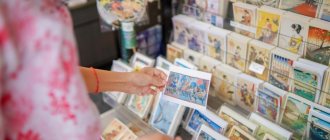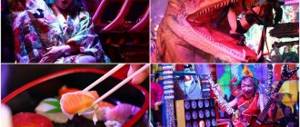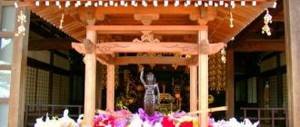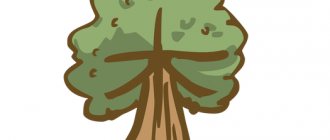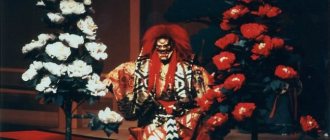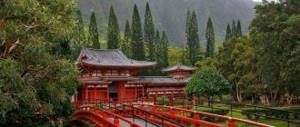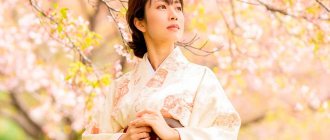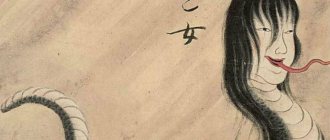Many hot springs in Japan used to be sacred places where Japanese people came to heal their injuries and illnesses. Later, during the Edo period, sick people began to stay in onsen for several weeks or even longer to recover. This is how inns began to appear.
Nowadays, visiting hot springs has become more of an entertainment or a kind of rest and relaxation. Many onsen, in addition to the hot springs themselves, offer stunning views, delicious food, and shopping nearby. This way you can relax and improve your health.
If visiting Japan is not yet part of your plans, then you can get treatment and strengthen your immune system at the DiLUCH sanatorium in Anata. Among other procedures, we strongly recommend visiting the therapeutic massage department, you can find out more about it by following the link https://diluch.ru/lechenie/otdelenie-lechebnogo-massazha.html.
Hakone Onsen
This is one of the popular hot spring areas, located just an hour and a half from Tokyo by car or train. There are many day spas and shops where you can buy souvenirs.
Onsen are located along the Hayakawa and Sukumogawa rivers. You can choose from rooms to suit different tastes, from historical and purely Japanese home-style to large-scale resort hotels.
Location: Hakonemachi, Ashigarashimo-gun, Kanagawa.
What should a newbie do in an onsen?
Entering the onsen, you will come across taps, mirrors, wooden basins, all sorts of soap and soap accessories, and, quite logically, other visitors carefully cleaning themselves up before plunging into a bath with geyser water.
Of course, at first it may be difficult for a beginner to give up the idea that everyone is watching him, but once you just imagine how many toxins will come out of him after taking even one bath with geyser water and how smooth his skin will become after visiting an onsen, all the embarrassment will disappear, and your feet will selflessly send you to the warm, seething water!
Kusatsu Onsen
This onsen, located in Ganma, is the leading onsen in Japan. A unique symbol of Kusatsu is the Yubatake structure, which is the main source of thermal waters.
There are always a lot of people here because you can visit many hot springs for free, as well as enjoy shopping in local stores. In addition, there are good hotels, hotels and cafes throughout the resort area.
Location: Kusatsumachi, Agatsuma-gun, Gunma.
How to properly conduct sessions
A person plunges into the water and simply sits in the furo, warming up the body. It does not swim, dive, splash, or move around unnecessarily. Any noisy, nervous and fast movements are considered bad manners. The visitor should slowly enter the bathing area and take a comfortable seat. After this, you should just relax, think or talk quietly with your neighbor. You cannot dive headlong; it is best to sit in water up to your neck. It is worth discreetly observing the local residents and their behavior, but at the same time avoid looking directly at naked people.
Beppu Onsen
This onsen is the largest in Japan in terms of the number of hot springs and the volume of water they contain.
To get to know this place better, we recommend taking a tour called Beppu Jigoku Meguri (Beppu Hell Tour). This way you can see different types of Jigoku springs, such as: Sea Hell, Blood Pond Hell, White Pond Hell and Tornado Hell. Here you can also try eggs boiled in a hot spring.
Location: Beppu-shi, Oita.
HOW TO BEHAVIOR CORRECTLY IN AN ONSENA
When going to an onsen, they change into a yukata robe. When stepping on the mats in the datsuijo locker room, slippers are left outside the threshold. Clothes should be neatly placed in a basket.
The Arabi enter the washroom completely undressed with only a small tenugui towel in their hands.
You must shower before entering the large shared bathtub. You are supposed to wash before entering the common yubune font. The tenugui you bring with you serves as a washcloth. In the pool, this folded towel is placed on the top of the head.
Sometimes you can order a bottle of sake on a floating tray at an onsen. But diving and smoking are prohibited. Like tattoos, which are considered a sign of the Yakuza mafia. Although in recent years, more and more thermal resorts have begun to allow tattooed bathers. You can find such onsens at www.tattoo-friendly.jp.
Returning to their room, guests can taste green tea with Japanese sweets and try to solve one of the Japanese puzzles prepared by the hotel staff to pass the time until dinner. And dinner in a ryokan for a tourist is no less an emotion than visiting the hot spring itself.
Kurokawa Onsen
The onsen is located about 75 minutes north of Mount Aso in Kumamoto. Almost every hotel here has an open-air hot spring. And if you buy a pass called “Nyuyoku tegata”, you can swim in three different hot springs. Water from the springs has a calming effect on the nerves.
Location: Minami Ogunimachi, Aso-gun, Kumamoto.
Hot springs Japan, Takaragawa Onsen
So we reached the village of Minakami. The night and the next morning were to be spent in the expensive ryokan Onsen Takaragawa (Takaragawa Onsen Osenkaku), which translates as hot springs on the treasure river. As I write these lines, the thought flashed through my mind that, in fact, we paid a lot of money just to spend the night, since in the morning we were packing up and moving on. In Japan, in principle, the time of Chekkuin, check-in and check-out at the hotel seemed unusual to me. If you stay only for one day, then they turn out to be very short. You can check into your room usually from four to five o'clock in the evening, sometimes from two, and you need to check out at nine to ten o'clock in the morning. True, you can always leave your luggage both before and after for the required time; it will be waiting for you in the lobby or in specially designated areas (depending on the size of the hotel). But such expensive places were chosen deliberately to see what was available, so on our way there was everything from a guest house to expensive ryokan, but we didn’t live in a capsule hotel. But Dmitry, the expedition organizer, says that his tours also offer this option for getting to know the hotel business in Japan. I would also be interested in experiencing this pleasure, although even in the guesthouse the cramped room made me a little uncomfortable.
We were just in time for dinner and had to quickly unpack, since there was a certain time allotted for dinner and we had to respect it. At the reception we were met by a strange guy; we had a feeling that he was somewhere far away, not with us, perhaps this was the effect of sake, or maybe just a character trait :)).
In the hall, he suggested that we choose a yukata according to our height, and he also gave me some additional thing. When the men also wanted to take one, they said that they were not allowed. Later it turned out that this is a cape (I don’t know what it’s called correctly) for women to bathe in the onsen. Men bathe in their original form, well, before reaching the pond, they can cover the causal area with a small towel. The onsen here is public and men and women bathe together. They say that the Japanese are calm about nudity and don't worry about it. But first things first.
The hotel is decorated in Japanese style. Entering the room we saw futons laid out on the floor. Surprisingly, sleeping on the floor is not at all hard, the mattresses are soft and the blankets are thick. I wouldn’t say that the room is gorgeous. Everything is already quite worn and not new, but quite spacious. And our constant occupation in many hotels was to look for lockers where we could hang things, sometimes we found these lockers when we had to leave. We didn't find a closet for things in this room, but there were a lot of hangers.
The floor is covered with tatami, by closing the sliding doors - shoji, you can muffle the sound of falling water. The room set is a standard small refrigerator, TV, thermos, tea, cookies.
A strong sound of water could be heard in the room, I thought “has the rain really gotten that much?” opening the windows I saw a river bubbling below.
And in the morning it looked like this.
The toilet and washbasin are common to several rooms. Surely all readers already know that in Japan there are special toilet slippers, here they are. They are different in different hotels, but the principle is the same - change your shoes and move on!
The shower is also shared, since bathing here is in onsens; the rooms do not have bathrooms. At the hotel, showers and rotemburo are located separately, and after taking a shower, guests cross the bridge to the onsen, having previously changed their shoes to street ones. In ryokans, all visitors are required to change into a kimono - yukata for the entire stay and so go for a walk, for breakfast and dinner, and become completely immersed in the Japanese lifestyle.
Takaragawa Onsen is one of the popular tourist destinations as it is the largest natural open-air hot spring resort in Eastern Japan. Here, unlike Nikko, there are a lot of foreigners. Local sources are recommended for various diseases - blood circulation, digestion, diseases of the nervous system, and sprained muscles and ligaments. And after walking nine hours through the mountains, God himself ordered us to relax in the hot springs. But as I already wrote, I didn’t swim in onsens on this tour. The guys enjoyed relaxing in the available baths at each hotel.
A little later, I will publish another article describing the hotel interior. Overall the hotel, service and food made a very good impression. If you're considering a hot springs getaway, this is a must-see. We booked our hotel room through Booking.com.
Enter the name - Onsen Takaragawa - into the search box, and you will be offered room options. This hotel is not the cheapest, as guests have free access to the onsen unlimited times and breakfast and dinner are included in the price. I want to say - a very tasty dinner. Some of the dishes are served individually, and the other part in unlimited quantities can be chosen according to the buffet table principle. The Japanese value these kinds of hotels where they can have delicious food.
Living on volcanic islands, the Japanese are constantly at risk. But there are also positive aspects of such proximity to volcanoes. There are more than 2,000 hot springs suitable for bathing in Japan. Thermal springs are one of the favorite vacation spots of the Japanese, especially if they are located in picturesque places, far from cities and closer to active volcanoes.
There are several types of hot baths:
- Rotemburo are outdoor hot springs located in picturesque places, on mountain slopes, in secluded areas of the park, along the river. They are designed so that, in addition to physical relaxation and therapeutic benefits, the visitor receives aesthetic pleasure. This type includes Takaragawa Onsen. On the territory of the ryokan along the river there are four natural pools with a slate bottom.
- Ofuro is a traditional Japanese bath; in onsen hotels, ofuro is filled with water from thermal springs, the water in them is constantly circulated and heated.
When visiting an onsen, you must follow several rules:
- Before diving, wash thoroughly. They wash themselves in the shower, sitting on small chairs so as not to splash on their neighbors. There are several showers built in a row on the wall; shower accessories in hotels are right there; you sit next to your neighbor and wash, no personal space. Forget about it if you come to the onsen.
- You are not allowed to wear shoes on the onsen grounds; they are left in front of the entrance. Exactly! When I went to take a shower after Nantai (it was not working hours for the onsen) and went into the place where they changed clothes in slippers, the caretaker girl immediately took them and took them outside the premises. I didn’t even realize that this was already an onsen. Well, what can you take from foreigners?
- Swimsuits are prohibited, probably no one will take them off of you, but that’s not customary. And girls need to pin up their hair, loose hair is bad, or rather prohibited. Although I saw a girl swimming with her hair down, she was probably also a foreigner.
- Many onsens still do not allow people with tattoos, but some take this calmly, so to avoid trouble, it is better to check the rules with the hotel administration in advance.
- You should not take a bath for too long, given that the waters contain various minerals and the temperature is relatively high, prolonged exposure to the source can adversely affect your health.
- And, usually the administration warns or puts up posters that you must respect the personal space of guests and not use cameras and video cameras on the territory of the onsen. But considering how many photographs there are on the Internet, this rule is not really followed. For the sake of fairness, it should be said that “photographers” are least of all interested in the person himself; it is interesting to capture the natural beauty of onsens, how they look, how they are equipped. It's like being in the south, being at sea and not taking a picture of the sea. Therefore, many try to film the source at a time when there are still few people, or better yet when there are none at all.
This is the thing they gave me for swimming in the onsen pools
And this is how it is used
photo from the Internet
Photos of Takaragawa Onsen are also from the Internet. Of course, I walked around and looked to get an idea of the public onsens, but I didn’t come close. I met some wonderful statues there, figurines in the spirit of the Japanese, but probably since my blog is not 18+, I won’t publish it.
At Takaragawa Onsen Osenkaku, only hotel guests use rotemburo until 10 a.m., so there are relatively few people and you can safely enjoy a hot bath without prying eyes. For women there is a separate indoor area with a swimming pool. After 10 o'clock everyone is allowed in for a fee.
There was still so much I wanted to tell about the bears that live on the hotel grounds and about the interior decoration of the premises. But most of all I liked the road from the hotel building to the onsen: trees, river, bridge, buildings, everything was so beautiful and despite the fact that the rain continued its wet business it was very BEAUTIFUL.
Ibusuki Onsen
You can get here by special bus from Kagoshima Airport in 95 minutes. This onsen is famous for its natural sand bath called Sunamushi. In short, they will take you to the beach and bury you in hot sand until only your head remains. This procedure has a beneficial effect on nerves and muscle pain, and also has a rejuvenating effect.
Location: Ibusuki-shi, Kagoshima.
INTERESTING FACTS ABOUT ONSEN
The best
The highest altitude onsen is Mikurigaike (2430 m) in the Northern Japanese Alps.
The highest open onsen (rotenburo) is Honzawa (2150 m) - in the same mountains, but a little to the south.
The two highest altitude onsen open all year round are Nigorigo and Manza at an altitude of 1800 m.
The spring that flows from the greatest depth (2714 m) is an onsen in the village of Rokkasho in Aomori Prefecture.
Dogo Onsen is considered the oldest, it is more than one and a half thousand years old. Legends say that the source flowed back in the days when the Japanese islands were inhabited only by gods who descended from heaven.
Unusual bathing procedures
The Yunessun Spa Resort in Hakone, near Tokyo, is famous for its baths of wine, tea, coffee and even sake.
And Yubara Onsen - winter bathing in citrus fruits.
Airport onsen
Ryukyu Onsen Senagajima Hotel is an unexpected resort spot very close to Okinawa's main airport. The local onsen, gushing from a depth of 1000 m, is called the “source of fertility”.
Directly from the bathhouse you can admire the sunset against the backdrop of the neighboring Karama Islands and planes taking off from Naha Airport. In such a “transit” onsen you want to stay longer and even change your departure date.
Monkey Onsen
It can be found at Jigokudani Snow Monkey Park, opened in 1964 in the Yokoyu River Valley in the Japanese Alps (Nagano Prefecture).
Here, hundreds of Japanese snow monkeys (macaques) warm themselves and take charge of the hot baths. This is a place of pilgrimage for tourists from all over the world, photographing funny animals.
.
A LIST OF TOUR OPERATORS - ATOR MEMBERS ORGANIZING TOURS TO JAPAN CAN BE FOUND HERE
Photos: VisitJapan
.
Arima Onsen
This is one of the oldest and most famous hot springs in Japan. It is located an hour's drive from Osaka. It is famous for a hot spring called Toyotomi Hideyoshi, named after one of the most powerful rulers. Also popular are the reddish-brown hot spring called Kinsen (Golden Spring) and the clear hot spring called Ginsen (Silver Spring).
Location: Kita-ku, Kobe-shi, Hyogo.
Where and how to find an onsen?
Since all the prefectures of Japan are equipped with onsens, their owners have to come up with something original to attract tourists to their paradise. An exception to the rule, it seems to us, are the geyser springs of Yamanashi Prefecture, since every traveling (and, importantly, self-respecting) Japanese is simply obliged to visit this place. Of course, there are onsens here, built in the strict old Japanese style, and they are often located in traditional hotels (in Japanese, ryokan), which are based in the mountains.
There are also onsens in Japan that notify tourists of their existence from afar! The sulfur smell begins to disturb the nostrils of an approaching traveler, even when he is in a car with the windows closed. We won’t say anything about being in the sulfuriest onsen, the taps of which can be corroded by this chemical! We agree, it doesn’t sound very rosy, but it should be noted that visiting such a source and bathing in sulfuric water has a positive effect on health.
Japan abounds in onsens; here everyone will find a piece of paradise to suit their taste and budget. Even in a state of haste and stress, in which most of the Japanese constantly find themselves, there is sure to be at least one day to escape to an onsen and soak in the hot water. After all, this is considered as integral a part of the life of local residents as the daily consumption of seaweed.
Gero Onsen
This onsen is located in Gifu and is one of the three most famous hot springs in Japan. The water in the springs is alkaline.
We also recommend visiting the village of Gero Onsen Gasshomura, where you can see houses with steep rafter roofs. From spring to autumn, the Ideyu Ichi fair is held here in the mornings, which we also recommend visiting.
Location: Gero-shi, Gifu.
DINNER AT THE RYOKAN
The best and most proper meal in a ryokan by an onsen is kaiseki ryori, Japanese haute cuisine. This is not only a satiation of the stomach, but also an aesthetic pleasure from beautifully served food. In ryokans, as a rule, there is no regular menu, and it is not customary to ask how much a dish costs. Dinner and breakfast are included in the price. They only pay extra for sake and other drinks. You can eat in your rooms or in the large hall with other guests.
The most modest list of kaiseki dishes has 12 items. A little bit of everything, but rest assured: satisfy your hunger and get a lot of unforgettable impressions!
Kaiseki dishes always change depending on the region. Japanese chefs cook only from seasonal ingredients - thus, every meal becomes part of the natural cycle, a reminder of autumn, summer, spring or winter. And yet there is a general principle for composing kaiseki ryori, called ichiju-sansai.
This is soup (ichiju) and three types of snacks (sansai) - raw (namasu), fried (yakimono), boiled (nimono). Five methods of culinary processing are allowed - frying, cooking in hot oil, boiling in water, steaming and serving food raw.
Food must correspond to one of the five tastes (gomi) - sweet (amai), salty (shiokarai), spicy (karai), sour (suppai) or bitter (nigai). The sight of it should also evoke five sensations (gokan): pleasing to the eye, hearing, smell, taste and a certain temperature that reveals the taste. Finally, the color palette should include five colors (goshoku) - white, black, yellow, red, green.
Japanese cuisine requires certain utensils: a kaiseki tray is lined with plates and bowls of different sizes, shapes and colors. In this apparent chaos there is both logic and harmony - all dishes balance each other. Summer is characterized by plates with a green pattern, images of bamboo and leaves.
For autumn – dark red and yellow tones of fallen leaves, a pattern of a swollen ear of rice. In winter, you can often see white plates with blue designs, symbolizing falling snow. In spring, there are almost always light pink tones of cherry blossoms.
What is it - a Japanese bath
A Japanese bathhouse is a spacious room with good ventilation and a flow of fresh air. There is no steam room, sink, brooms or other bath paraphernalia. Instead, the room contains a large wooden container, called a furaco, and a couch for relaxing.
The main purpose of a Japanese bath is to relax the body and mind, take a break from worries and tune in to peace.
Japanese bath ofuro
A Japanese bath can be made in the form of a rectangular box. For production, specially processed cedar, teak, ash or oak wood is used. This container has thick walls and is equipped with a heating system, which is located in its bottom. Heating systems are equipped with various additional options - thermostat, remote control, etc. The size of the box varies, depending on the number of people it can accommodate. More often, such a bath is intended for one visitor. He lies down in it at full length.
The ofuro font is filled with sawdust (larch, cedar, linden, oak) mixed with dry leaves, medicinal herbs (more than 60 types), roots and aromatic essential oils. The mixture is heated to +45...+50° C. The weight of sawdust is about 45-50 kg, the top layer (about 2 kg) is removed and renewed after each visit to the bath.
They are immersed in the sawdust bath up to their necks and remain there for no more than 30 minutes. During this time, the skin warms up well. Increased sweating begins, during which toxins are released from the body. The sweat is immediately absorbed by the sawdust.
At the same time, the heated sawdust itself releases beneficial oils and volatile substances that have a healing effect on the skin (destroy germs and bacteria, heal wounds, relieve irritation, etc.). Aromatic components activate metabolic processes and slow down aging. Ofuro bath is considered the best remedy for rejuvenation and weight loss.
After visiting a bath with sawdust, you are supposed to undergo a similar procedure in a box with dry pebbles heated to 60°C, covered with a sheet or towel. They lay on it with their back and lie for 10-15 minutes. You can lie on your stomach, in which case heated stones are additionally placed on your back along the spine. There are options for the ofuro bathhouse in volcanic ash.
Who can be denied access to an onsen?
In Japan, tattoos have long adorned the bodies of members of the Yakuza. Even today they are not allowed into the onsens. Just imagine the bewilderment of a foreigner who was asked to leave after he had paid for a visit to the source, undressed and soaped his hair. But for this it is enough to have a tiny tattoo somewhere just above the heel! Therefore, it is better to stock up on flesh-colored plasters and cover your tattoo with them before visiting the onsen, or order a separate family bath. Yes, yes, some onsens have these and they rent out by the hour.
» ALSO READ ARTICLE - 10 things you should not do in Japan
